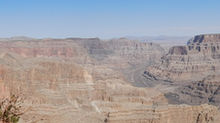One day into the Surajkund International Crafts Mela
- Neelakshi Yadav
- Apr 23, 2017
- 3 min read

A thirty-year-old extravaganza that comes to light in the first fortnight of every February, the Surajkund Mela is the grandest of all craft exhibitions. Being the largest crafts mela in the world, the Surajkund mela receives more than a million visitors annually. Each year, the fest invites artisans and craftsmen from all around the world. This year, a total of 20 countries participated along with all the 29 states of India.

Organised by the Surajkund Mela Authority & Haryana Tourism in collaboration with Union Ministries of Tourism, Textiles, Culture and External Affairs, the thirty-year-old tradition is a key event to promote not only the crafts, but also the culture of the world. Each year, a state of India is honoured by being selected as the ‘Theme State’, where it gets the maximum fest coverage and area. This is done to promote the crafts, foods, artisans, dances and other regional cultural elements of each state every year. JHARKHAND was the chosen theme state for the 31st Surajkund International Crafts Mela 2017. ‘JHARCRAFT’, an initiative by the government of Jharkhand to promote the rich, traditional handicrafts of the state came in the limelight with over 150 stalls, all dedicated to the craftsmen and local cultural groups of Jharkhand.

One could enter the mela after a purchase of ticket and a security check. It was amazing to see how the security team could manage tens of thousands of visitors per day with ease and effective planning. An active police force was deployed throughout the mela grounds to help the locals find their way and to ensure a happy and peaceful environment in the fest.

One inside, the first thing that any visitor would notice were the huge amusement rides installed right outside the main mela grounds. The ground was packed with huge number of people waiting in lines to get their number at one of the many joy rides that were available for both kids and adults alike. Huge constructions were placed at the entry gate of every zone to welcome the visitors into their cultural journey. Traditional décor was prevalent throughout the mela and could be witnessed in flags, art installations, hut decorations, wall paintings and entry gates. Each stall was a hut with mud painted walls, giving the entire mela a village-like feeling. Ethnic music ran constantly through speakers placed all over the mela.

The mela is so huge every year that one needs two to three days if they want to cover it in its entirety. People from all over the country could be seen. One wonderful aspect of the Surajkund mela is that one can purchase any item from the very maker of it and can also receive first-hand information and insights into the making of the artefact. The mela provides a great opportunity for the people to connect with the craftsmen from all over the world, as they discuss their lifestyles, their income levels and their problems too. It helps to bring the hidden world of these forgotten craftsmen to the surface and encourages them to continue with their remarkable work. The ‘KALA MANI’, ‘KALA NIDHI’ and ‘KALA SHRI’ awards are also given out to exceptional craftsmen. Apart from the craftsmen, this year local businessmen were spotted too, selling daily products and household items.

Several ‘CHAUPPALS’ (Indian open-air theaters) were constructed in different parts of the mela premises to host evening dance and music performances by the national and international cultural groups. Audiences in huge numbers rushed to these chauppals as soon as a performance would begin. There was a separate area designated to food stalls which supported a huge array of traditional national and international cuisines from different cultural groups. Along with the huge food court area, there were small food stalls beside the state crafts stalls, promoting their cuisine specialty.




The Surajkund Mela is not just a crafts fest. It serves as a huge incentive for the dying traditional crafts techniques and cultures that have been forgotten over time, buried under layers of modernism. It is a house of stories and emotions and one can look forward to visiting it every year, as long as it serves to revive age-old traditions and cultures.
Image Credits: Neelakshi Yadav







































Comments